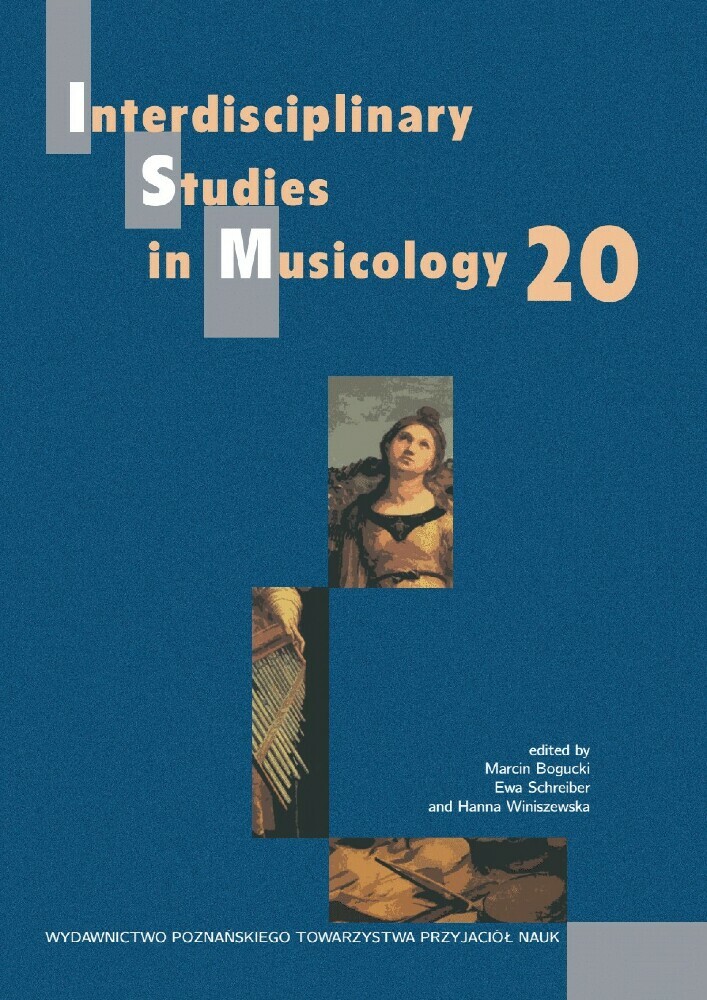Abstract
The paper is an attempt to synthesize the most important aspects of a model of popular and film music analysis proposed by British musicologist Philip Tagg. Tagg, using the category of musemes – universal meaning units, isolated from the musical structure of the composition on the basis of criteria established for every given case – examines selected pieces using multi-level semiotic analysis. In his model Tagg takes into account both the importance of the broadly understood cultural context and the intertextuality of the piece. He also emphasizes the role of affect in musical communication, which is necessary to fully understand the meaning of a musical work.
References
Buelow, G. (2001). Affects, theory of the. Grove Music Online. https://www-1oxfordmusiconline-1com-100008czb108a.han.buw.uw.edu.pl/grovemusic/view/10.1093/gmo/9781561592630.001.0001/omo-9781561592630-e-0000000253 [accessed: 12.04.2020].
Chodkowski, A. (Ed.), (2001). Encyklopedia muzyki [Encyclopaedia of Music]. Warszawa: Wydawnictwo Naukowe PWN.
Jarzębska, A. (2001). Model dyskursu o muzyce w ujęciu Philipa Tagga [Philip Tagg’s model of discourse about music]. Res Facta Nova, 12(21): 75–82.
Lang, P. H. (1963). Music in Western Civilisation. London: J. M. Dent & Sons Ltd.
Middleton, R. (2002). Studying Popular Music. Philadelphia: Open University Press.
Moore, A. F. (2003). Analyzing Popular Music. Cambridge: Cambridge University Press.
Nattiez, J.-J. (1990). Music and Discourse. Toward a Semiology of Music. Princeton, New Jersey:Princeton University Press.
Tagg, P. (1982). Analysing popular music: theory, method and practice. Popular Music, 2: 37–65.
Tagg, P. (1999). Introductory notes to the Semiotics of Music. Liverpool/Brisbane: [unidentified publisher].
Tagg, P. (2001). Kojak: 50 Seconds of Television Music. Towards the Analysis of Affect in Popular Music. New York: The Mass Media Music Scholars’ Press.
Tagg, P. (2020). Philip Tagg: Curricula Vitae [online]. http://tagg.org/ptcv.html [accessed: 12.04.2016].

